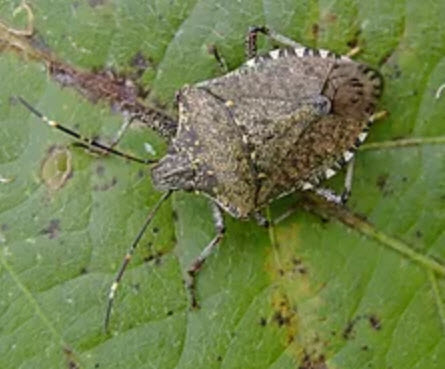Brown Marmorated Stink Bug

Origin: The brown marmorated stink bug (Halyomorpha halys) (BMSB) is native to China, Japan, and Korea.
Current Distribution in California: Reproducing populations have been found in Butte, Los Angeles, and Sacramento counties. Interceptions and single finds have been made in Alameda, Butte, Contra Costa, Glenn, Lassen, Los Angeles, Orange, Sacramento, San Bernardino, San Diego, San Francisco, San Joaquin, San Luis Obispo, San Mateo, Santa Barbara, Santa Clara, Sierra, Siskiyou, Solano, Sutter, and Yolo counties.
Biology: BMSB has one to two generations per year, depending on temperature and location.
Host Range: BMSB has a wide host range including apple, asparagus, blackberry, blueberry, cantaloupe, cherry, citrus, corn, cucumber, fig, grape, mulberry, peach, pear, pecan, pepper, persimmon, plum, raspberry, soybean, string bean, sunflower, tomato, and watermelon, among others.
How it Spreads: The original mode of spread to the U.S. was in cargo containers from Asia. BMSBs spread long distances in vehicles or as stowaways in furniture, storage boxes, trunks, and yard items. Most new infestations are found in urban areas.
Potential Damage: Feeding on the surface causes small necrotic spots on fruit and leaf surfaces, secondary infections, and “cat-facing” (an unsightly dimpling, deformity, and scarring of fruit), making it unsuitable for market. BMSBs harvested with grape clusters can possibly cause a taint in wine. Some orchards in the mid-Atlantic states have been reporting up to 50 percent crop damage due to the insect.
Current Control Measures: General pesticide applications are not effective because BMSBs do not live on the plants that they feed on. This and the wide range of hosts pose a tremendous challenge for the development of control strategies.

